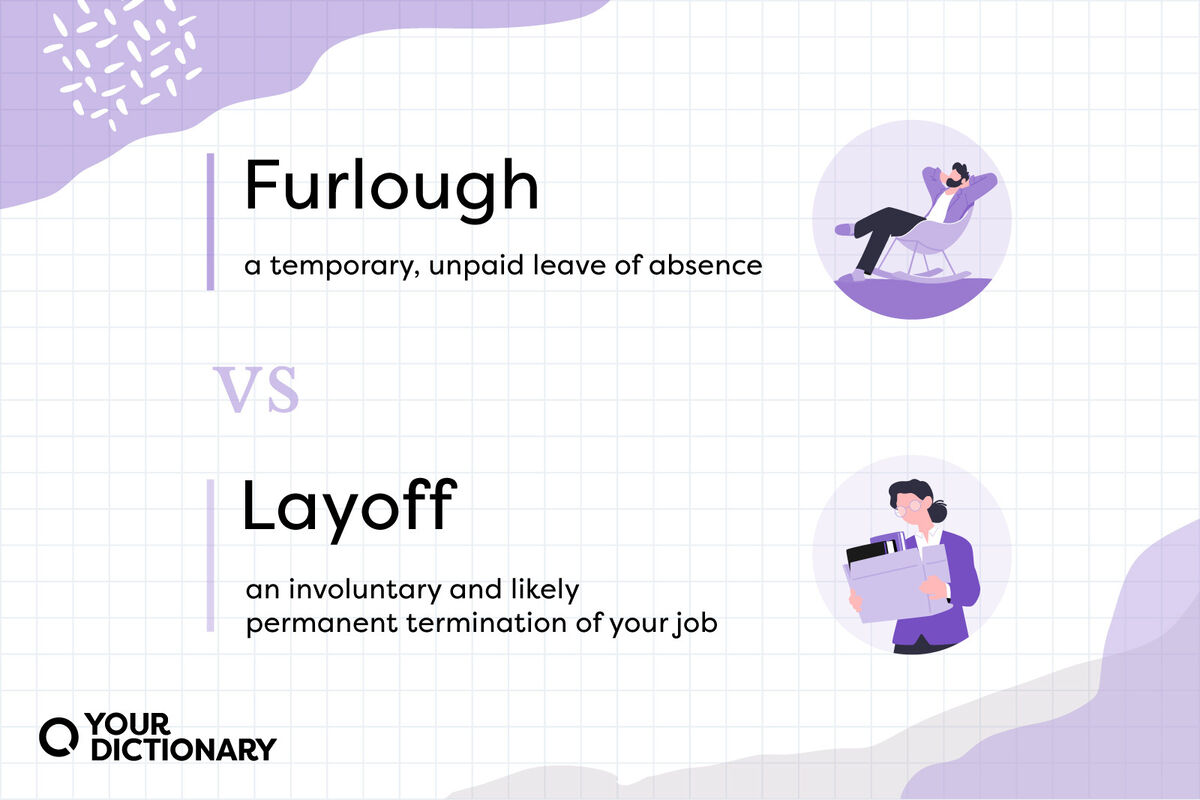
While you can mess up at your job and end up fired, a changing economy can also have a significant impact on your employment. Companies that find themselves in financial trouble may need to furlough or lay off their employees or allow for voluntary layoffs. While these all end with you out of a job, they do have their nuances and distinctions.
Furlough vs. Layoff: Temporary and Permanent Termination
Companies will often have their own individual policies regarding furloughs and layoffs, but both are involuntary forms of employee termination related to cutting company costs. Involuntary here means that your dismissal or termination comes from the actions of your employer.
The main difference between the two is how long they last. A furlough is a temporary, unpaid leave of absence. A layoff is an involuntary termination of your job that is more likely to be permanent.
What Happens When You’re Furloughed?
Sometimes, furloughs are straightforward: Employees are asked to stop all work for a set time period. Some companies may implement furloughs in more nuanced ways:
- Your company may force you to take an unpaid vacation every quarter.
- Without any changes to your hours or pay, your employer may require you to use all of your paid time off before the end of the year.
- You may now have Fridays off, but they are unpaid.
As furloughs are temporary terminations, the employer may bring you back to normal working hours after the furlough period. However, if things don’t take a turn for the better, furloughs can lead to layoffs.
Why Furloughs Happen
With both furloughs and layoffs, a company is trying to downsize their workforce as a means of saving money. If your employer believes the economic problems are only temporary, they may furlough employees to prevent the company from losing them long term.
What Happens When You’re Laid Off?
Getting laid off is less complex than getting furloughed. Your employer will likely call you into their office and tell you you’re being let go. You won’t get a warning, and the employer isn’t obligated to give you a reason.
Your employer will typically offer some form of severance, like a month’s pay and remaining PTO paid out. However, according to the Department of Labor, your employer is not required to provide a severance package.
Furloughs, Layoffs and Unemployment
When you’re laid off, you are considered unemployed and can sign up for unemployment insurance through your state.
Furloughs can be trickier because you are still technically “employed.” In some states, you may not be able to register for unemployment when furloughed. You can potentially seek freelance work or a second job as long as it doesn’t breach your contract with your existing job.
Other Forms of Termination
Along with furloughs and layoffs, employers have a handful of other tools to terminate employment and remove your job title.
Voluntary Layoffs
In some situations, a company may ask for voluntary layoffs. This typically starts with an employer offering an incentive to employees willing to leave. These incentives can vary, but they may include additional or more benefits than with a regular layoff, like extended healthcare insurance.
Fired for Cause
Being fired for cause means that you are being terminated for breaking a rule or otherwise performing some misconduct. This may mean breaking company policy, doing something that put the company at risk or breaking the law.
Fired and laid off are often used interchangeably, but many people associate fired with fired for cause.